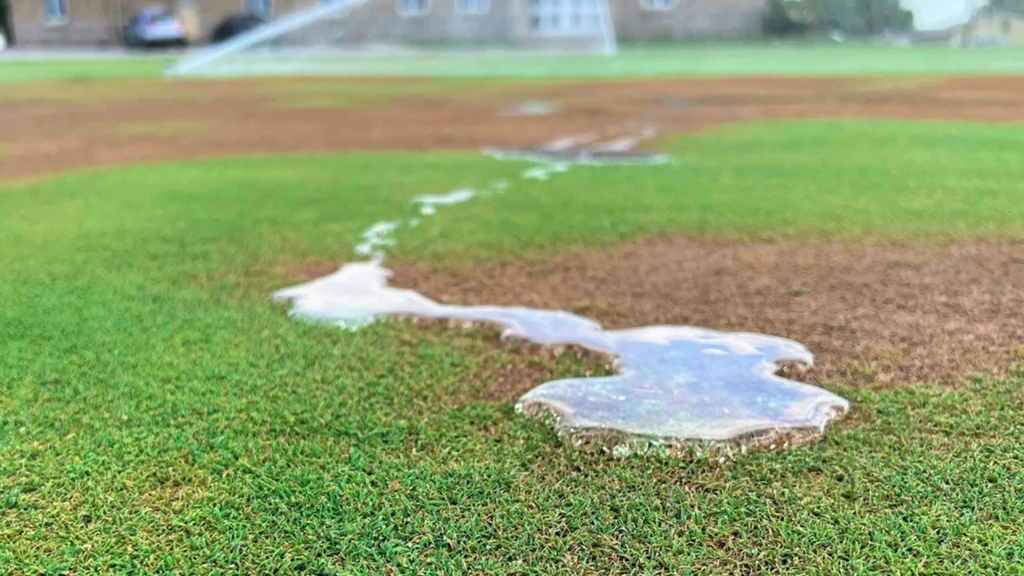In short, a wetting agent is a substance that lowers the surface tension of a liquid therefore increasing its penetrating and spreading qualities of previously water repellent surfaces. Wetting agents are from a class of chemical compounds known as surface active agents or ‘surfactants.’ Which you may also see them called as.

What are they used for?
In turf management they are often used as a solution to dry patch or during early stages, wilting or stress during high temperatures, dry and windy days as a preventive. Dry patch is a condition of soil that has become hydrophobic or more commonly known as water repellent. The symptoms of dry patch are patches of brown, dying grass amongst a healthy sports turf surface. It’s not limited to any particular type of grass or surface. Dry patches can be found on golf or bowling greens, lawns, football fields and more. A tall tail sign for dry patches is that they will be completely dry even after heavy rainfall and may smell musty.
To understand wetting agents you need to understand these two intermolecular forces.
Cohesive Forces:
The forces exerted between molecules holding them together. If cohesive forces are strong, a liquid tends to form droplets on a surface.
Adhesive Forces:
The forces between liquid molecules and a surface. If adhesive forces are strong, a liquid tends to spread across a surface. Lowering the surface tension lowers the energy required to spread drops onto a film, thus weakening the cohesive properties of the liquid and strengthening its adhesive properties.A great example of a wetting agent would be everyday dish soap. Just think less about the actual cleaning of the surface and more about the effects the soap has on water movement on the plate. On a dirty plate all the food oils and particles have cohesive forces which make it difficult for the water to spread and clean the plate. Soap dissolves all these unwanted particles, exposing a clean surface. The soap also lowers the surface tension of water, allowing it to spread evenly across the entire surface.How to Tell if a Liquid Contains a Wetting AgentOne method of knowing whether or not a liquid has a wetting agent in it is to spread the liquid on a surface that is coated in grease. If the liquid does not contain a wetting agent, its cohesive forces would overpower adhesive forces, causing the liquid to form droplets on the surface. If the liquid does contain a wetting agent, the grease would be dissolved and the surface tension of the liquid would be lowered, causing the adhesive forces to overpower the cohesive forces. This would result in the liquid spreading evenly along the surface.
